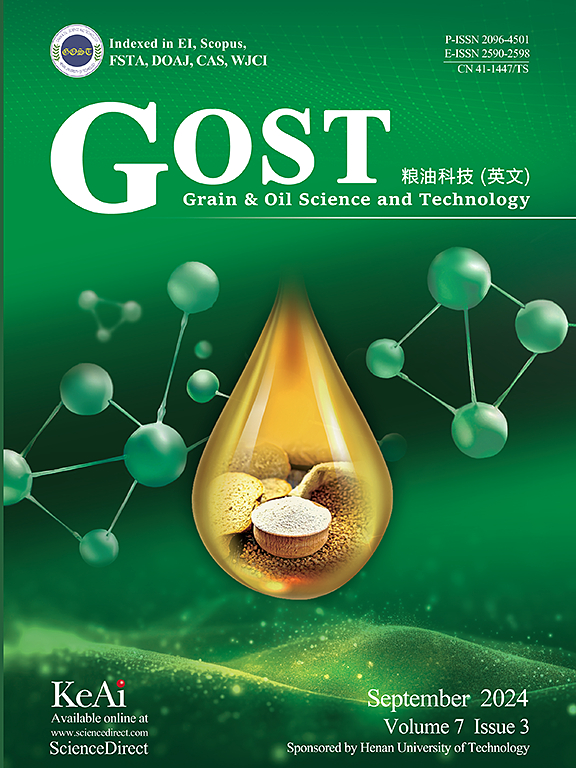Physicochemical properties and health benefits of resistant starch, resistant dextrin, and polydextrose: Similarities and differences
Q2 Agricultural and Biological Sciences
引用次数: 0
Abstract
This is a review on resistant starch (RS), resistant dextrin (RD), and polydextrose (PDX), focusing on their similarities and differences. RS refers to the starch (or a portion of) that cannot be digested in the small intestine, but can be partially fermented in the colon. The enzyme resistance of RS is mainly due to either its crystalline/granular structure or its interaction with other components. RD is produced by pyrodextrinization of starch, while PDX is produced by polycondensation of glucose and sorbitol. Both RD and PDX contain glycosidic linkages that are not digestible by the enzymes in the small intestine. RS is not soluble in water, whereas RD and PDX are soluble, mainly due to their molecular structures and other structural features. The major health benefits of RS, RD, and PDX are quite similar, including gut health, prebiotic effects, glycemic control, weight management, and prevention of cardiovascular disease. However, the efficacies can be different among them, for example, the degree and rate of gut fermentation. This review compares the definitions, functional properties, and health benefits of RS, RD, and PDX with the underlying mechanisms, which can be useful for their incorporation in food formulations to improve human health and wellness.

抗性淀粉、抗性糊精和聚葡萄糖的理化性质和健康益处:异同
本文综述了抗性淀粉(RS)、抗性糊精(RD)和聚葡萄糖(PDX)的研究进展,重点介绍了它们的异同。RS是指淀粉(或部分淀粉)不能在小肠中消化,但可以在结肠中部分发酵。RS的酶抗性主要是由于其结晶/颗粒结构或与其他组分的相互作用。RD是通过淀粉的焦糊化产生的,而PDX是通过葡萄糖和山梨醇的缩聚产生的。RD和PDX都含有不能被小肠酶消化的糖苷键。RS不溶于水,而RD和PDX是可溶的,这主要是由于它们的分子结构和其他结构特征。RS, RD和PDX的主要健康益处非常相似,包括肠道健康,益生元作用,血糖控制,体重管理和预防心血管疾病。然而,它们之间的功效可能不同,例如,肠道发酵的程度和速度。本文对RS、RD和PDX的定义、功能特性、健康益处及其潜在机制进行了比较,以期为将其纳入食品配方中以改善人类健康和保健提供参考。
本文章由计算机程序翻译,如有差异,请以英文原文为准。
求助全文
约1分钟内获得全文
求助全文
来源期刊

Grain Oil Science and Technology
Food Science
CiteScore
7.30
自引率
0.00%
发文量
69
审稿时长
12 weeks
期刊介绍:
 求助内容:
求助内容: 应助结果提醒方式:
应助结果提醒方式:


